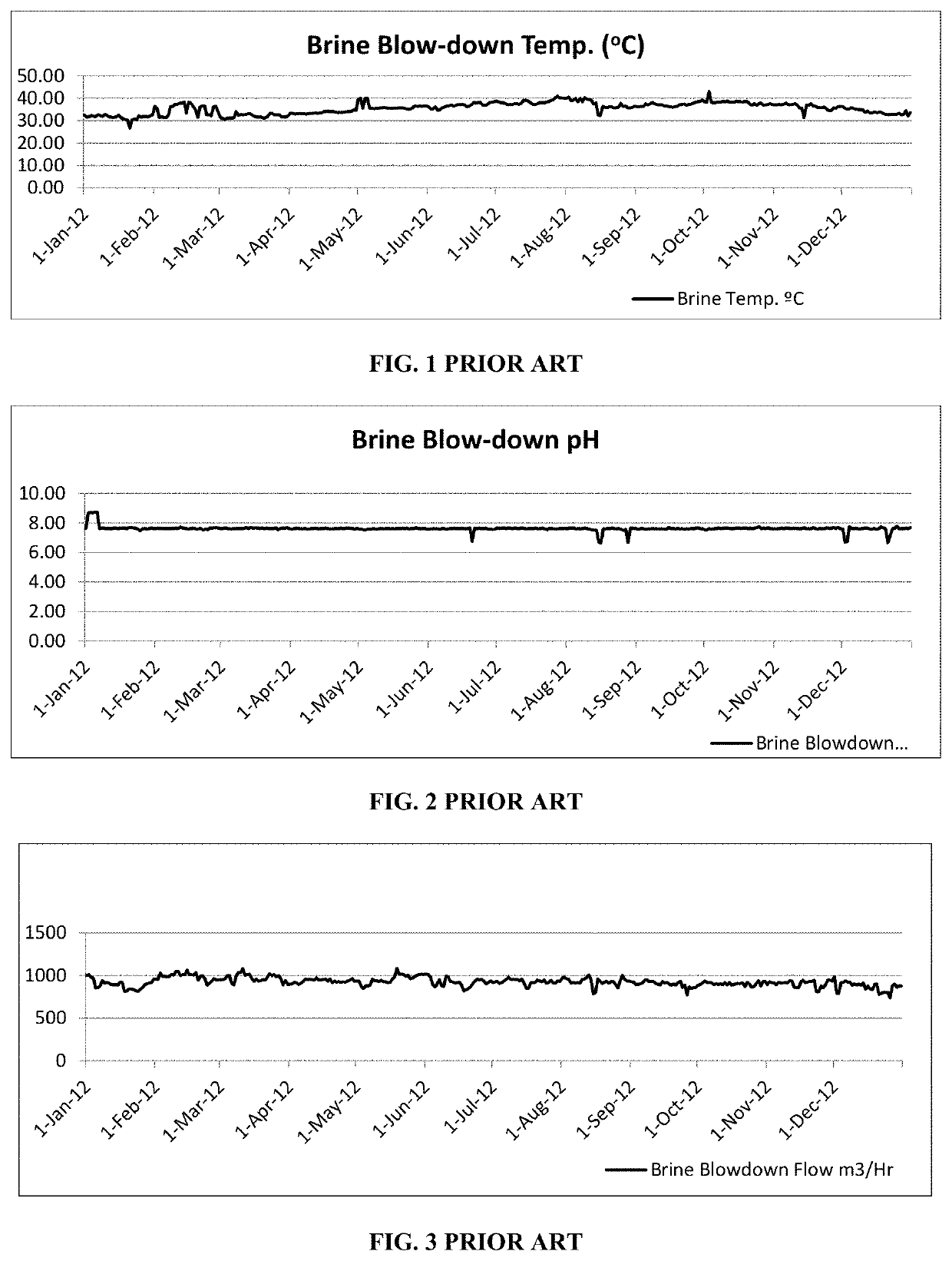Methods for monitoring marine waterbody sustainability at discharge sites
a technology for marine water bodies and discharge sites, applied in multi-stage water/sewage treatment, water treatment parameter control, treatment control/steering, etc., can solve problems such as brine “could be a serious issue, fish toxic effects, and potential threat to marine environment and aquatic species diversity
- Summary
- Abstract
- Description
- Claims
- Application Information
AI Technical Summary
Benefits of technology
Problems solved by technology
Method used
Image
Examples
example 1
hemical Effects of Brine Discharges
[0162]Physico-chemical effects of the brine discharge, viz., elevation in temperature, salinity, turbidity, TSS, heavy metals, DBPs, Petroleum Hydrocarbons (PHCs), Persistent Organic Pollutants (POPs), Polychlorinated Biphenyls (PCBs), etc., are desired to be studied because conforming to environmental standards that would protect the species and ecosystems also necessitate exigent attention. Particular care is required to the accumulation of PHCs, POPs, PCBs and heavy metals in animal tissues and their bio-geo-chemical cycling in ecosystems. Physical oceanographic studies covering aspects, such as currents, waves, tides, etc., are also needed for locating the intake and discharge bays from environmentally sustainable angle.
[0163]Marafiq produces an average of 923.89 m3 / hr of brine discharge on annual basis (FIG. 3). In order to assess the prime effects of brine discharge from Marafiq-Y on marine environment and degree of compliance with environmen...
example 2
Long Term Concentrated Brine Disposal on the Ecosystems of Nearshore Marine Environment—a Case Study
Materials and Methods
[0217]This Procedure covers both scenarios, viz., (i) “Pre-operation Assessment” of the site before starting the construction of a desalination plant, and (ii) “Post-operation Assessment” of the site. It gives a better and comparative narrative of the nature of short-term and long-term impacts caused. It is recommended that checklists are prepared for “Impact Assessment”, assessment exercises are carried out on yearly basis, and an “Assessment Register” is maintained by each desalination plant for comparison over times, planning remedial actions in case of severe deviations, and also to determine the cumulative or overall impact during the total life-cycle of the plant operation. It is also recommended that “Assessment Register” is periodically audited by any Regulatory body.
[0218]It is utmost vital for desalination plants with overlapping latitudinal ranges, shar...
example 3
Diversity in Seawater Near Marafiq Desalination Plants Shows Nonthreatening Impact on Marine Ecosystem
[0388]The active biomass indicating the active microbial cells, the bacterial and phytoplankton cell counts, bacterial cells classification as low and high nucleic acid content cells, identification of active bacterial population, characterization of microbial diversity and taxonomic affiliation by next generation sequencing of 16S Ribosomal RNA gene, clustering of sequences at 97% similarity for specific operational taxonomic units (OUT), diversity-index (Shannon H.) calculation, clustering of sequence dataset at OTU level, multidimensional scaling of same dataset corroborating the clustering results, phyla distribution of sequence datasets, major phyla distribution and corresponding class distribution, relative sequence representativeness of major phylotypes, etc., were conducted during years 2016-2019. Additionally, temporal survey of seawater microbial community was performed by...
PUM
 Login to View More
Login to View More Abstract
Description
Claims
Application Information
 Login to View More
Login to View More - R&D
- Intellectual Property
- Life Sciences
- Materials
- Tech Scout
- Unparalleled Data Quality
- Higher Quality Content
- 60% Fewer Hallucinations
Browse by: Latest US Patents, China's latest patents, Technical Efficacy Thesaurus, Application Domain, Technology Topic, Popular Technical Reports.
© 2025 PatSnap. All rights reserved.Legal|Privacy policy|Modern Slavery Act Transparency Statement|Sitemap|About US| Contact US: help@patsnap.com



